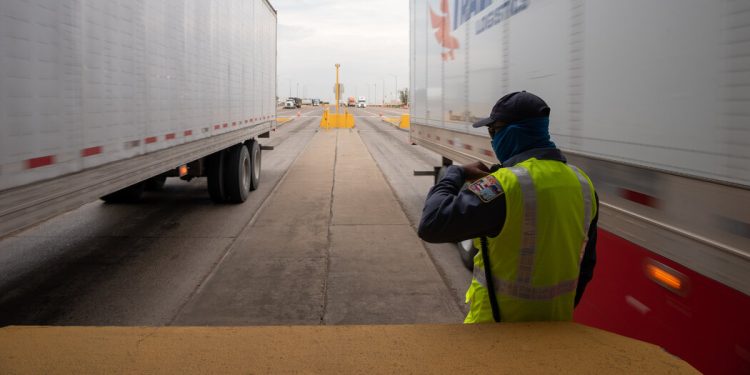When Dennis Nixon started working in a regional bank in Laredo, Texas, in 1975, there was just a trading net through the border with Mexico. Now, nearly a billion dollars in commerce and more than 15,000 trucks exceed the line every day just a quarter of its office, linking savings in the United States and Mexico together.
Laredo is the most frequented port in the United States and a duct for automotive parts, petrol, lawyers and computers. “You can no longer separate it,” said Nixon about American and Mexican economies. Thirty years of economic integration within the framework of a free trade agreement have created “the interdependencies and the relationships that you do not understand and do not always measure, until something is bad”, a- he said.
Now that something is looming: 25% of prices on Mexican products, that President Trump plans to impose on Saturday while he is trying to put pressure on the Mexican government to do more to slow down illegal immigration. Trump is expected to hit Canada with 25% samples and impose a 10% tax on Chinese imports.
Among the longtime prices of the prices and criticism of the free trade agreements, Trump does not seem to overthrow the economic relations closest to America. He focuses on the strengthening of the border against illegal immigration and the fentanyl flow, two areas he often talked about during his campaign in 2024.
But the president has other oxen with Mexico, including the economic competition it poses for American workers. The president and his supporters believe that imports of Mexico cars and steel weaken the American manufacturers. And they say that the agreement of the United States-Mexico-Canada, the trade agreement that Mr. Trump signed in 2020 to replace the North American free trade agreement, must be updated-or perhaps Being, in some spirits, put to the rebuilding.
Many companies say that the links between countries are deeper than most Americans think, and politicians like prices that seek to separate them would be painful. Of all the main economic partners in the world, the United States and Mexico are among the most integrated – linked by business, trade, tourism, family ties, funds and culture. It is a proximity that sometimes generates dissatisfaction and efforts to keep the relationship away, but also brings many advantages.
Thank you for your patience while we check the access. If you are in reader mode, please leave and connect to your Times account, or subscribe to all time.
Thank you for your patience while we check the access.
Already subscribed? Connect.
Want all the time? Subscribe.


